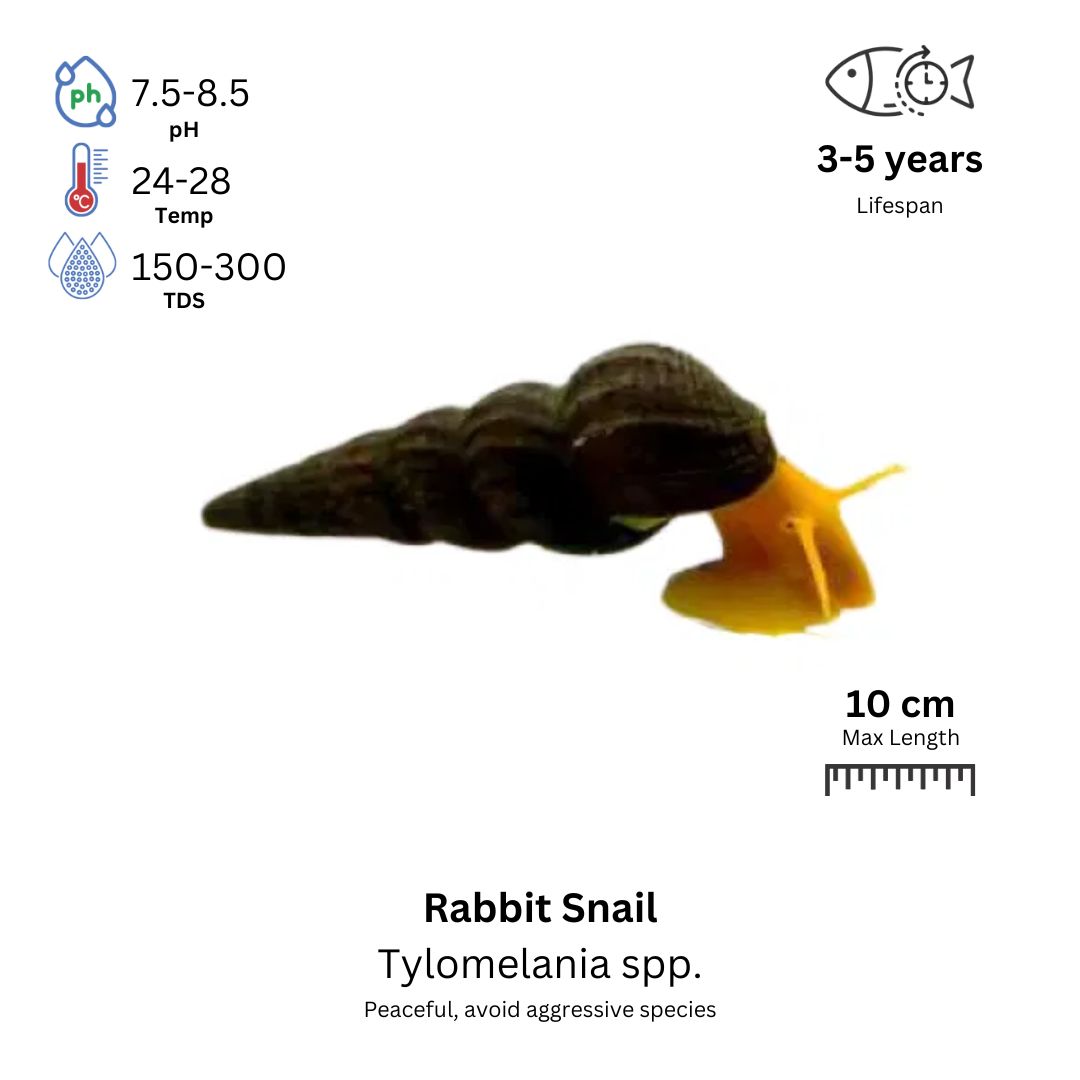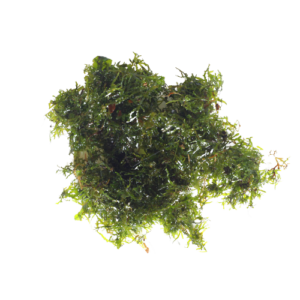Rabbit Snail: Species Profile
Species Overview
Common Name: Rabbit Snail
Scientific Name: Tylomelania spp.
Adult Size: 2-5 inches (5-12 cm) depending on the species
Life Expectancy: 1-3 years
Characteristics
- Family: Pachychilidae
- Origin: Sulawesi, Indonesia
- Social: Peaceful; compatible with a variety of tankmates
- Tank Level: Bottom-dweller
- Minimum Tank Size: 10 gallons (larger for groups or multiple individuals)
- Diet: Omnivorous scavenger
- Breeding: Slow reproduction in captivity
- Care Level: Beginner to intermediate
- Preferred pH: 7.0–8.5
- Water Hardness: Moderately hard to hard
- Temperature: 76–84°F (24–29°C)
Origin and Distribution
Rabbit Snails are native to the freshwater lakes and rivers of Sulawesi, Indonesia. These unique snails are found in a variety of habitats, ranging from sandy riverbeds to rocky lake bottoms, where they forage for food and play an important role in the ecosystem.
Colors and Markings
Rabbit Snails are known for their elongated, spiraled shells and their soft, rabbit-like faces, which include a distinct pair of feelers. Shell colors vary and may include shades of yellow, brown, black, or even orange, often with interesting patterns or striations.
Tankmates
Rabbit Snails are peaceful and thrive with non-aggressive tankmates. Suitable companions include:
- Small fish like tetras, guppies, or rasboras
- Shrimp species like cherry or amano shrimp
- Other peaceful snails
Avoid keeping them with aggressive fish or those that may nip at their soft bodies, such as loaches or cichlids.
Habitat and Care
Rabbit Snails require a well-maintained tank that mimics their natural habitat. Key considerations include:
- Tank Setup: Use a soft substrate like sand or fine gravel to protect their soft foot. Add rocks, driftwood, and live plants for grazing and shelter.
- Water Quality: Maintain stable water parameters with a slightly alkaline pH to support their shell health. Avoid copper, which is toxic to snails.
- Maintenance: Perform regular water changes and monitor water hardness to prevent shell erosion.
Diet and Feeding
Rabbit Snails are omnivorous scavengers and help keep tanks clean. Their diet can include:
- Algae on tank surfaces
- Blanched vegetables like zucchini, spinach, or cucumber
- Algae wafers or commercial snail pellets
Provide a balanced diet to ensure their nutritional needs are met.
Gender Differences
Rabbit Snails are not easily distinguishable by gender. They are dioecious (separate sexes), but determining the gender requires close observation of breeding behavior.
Breeding
Rabbit Snails reproduce slowly, giving birth to one or two live young at a time:
- Breeding Behavior: Mating pairs may be observed near each other for extended periods.
- Birth: Females produce eggs that hatch internally, and small snails emerge fully formed.
- Care for Young: Baby snails are independent from birth and require no special care, feeding on algae and biofilm in the tank.
Further Research
Rabbit Snails are fascinating additions to freshwater tanks, known for their unique appearance and peaceful nature. Learn more about their care and behavior to fully enjoy these charming creatures.
FAQ
Q: Do Rabbit Snails clean the tank?
A: Yes, they consume algae and leftover food, helping maintain tank cleanliness.
Q: Can they live in a planted tank?
A: Yes, they are plant-safe and will not damage healthy plants, though they may nibble on decaying leaves.
Q: How do I prevent shell erosion?
A: Ensure water hardness is sufficient, and provide a diet rich in calcium to support shell health.



Reviews
There are no reviews yet.